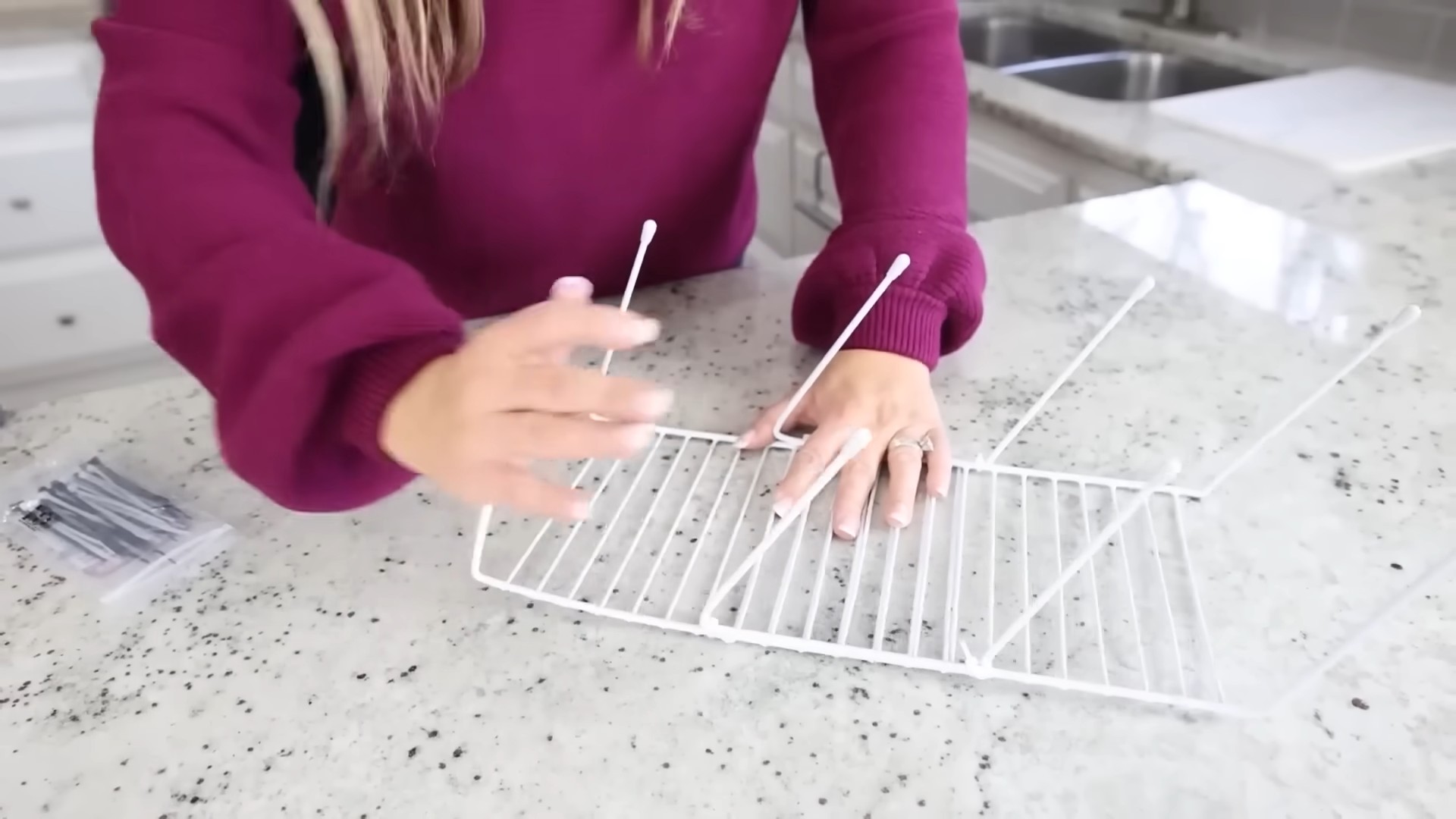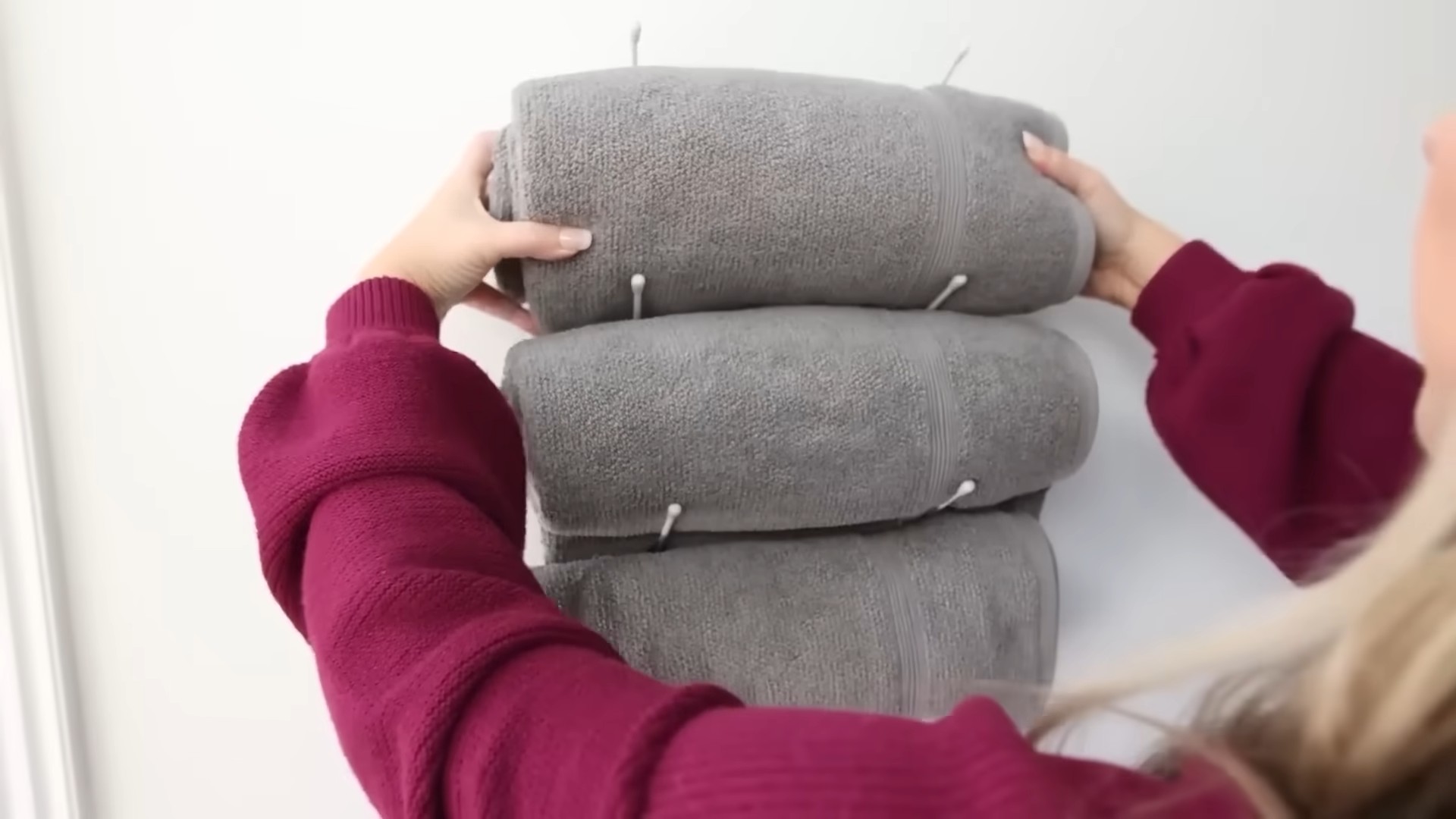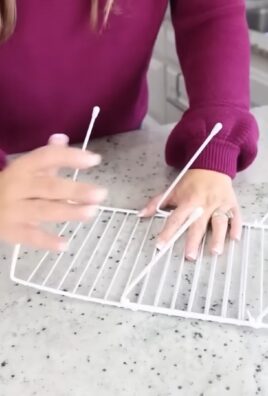Dollar Tree Rack Ideas: Unleash Your Inner DIYer on a Budget!
Have you ever dreamed of organizing your home beautifully, but balked at the hefty price tags of store-bought shelving and storage solutions? I know I have! That’s why I’m so excited to share my passion for Dollar Tree rack ideas – clever, affordable, and surprisingly stylish ways to transform your space without breaking the bank. This isn’t just about saving money; it’s about unleashing your creativity and proving that stunning organization doesn’t require a fortune.
The history of DIY home improvement is rich and varied, reflecting our ongoing desire to personalize our living spaces. From repurposing old crates to crafting ingenious storage solutions from readily available materials, resourceful individuals have always found ways to make their homes more functional and beautiful. My Dollar Tree rack ideas tap into this long tradition, offering a modern twist on the age-old practice of making do with what you have – and having fun while doing it!
Why do you need these DIY tricks? Because they empower you! They allow you to customize your storage to perfectly fit your needs and style, unlike mass-produced furniture. Whether you’re tackling a cluttered closet, organizing a craft room, or simply need extra shelving in the pantry, these Dollar Tree rack ideas provide practical, affordable solutions. You’ll be amazed at the transformation you can achieve with a little ingenuity and a few strategically placed dollar store finds. Let’s dive in and unlock your inner DIY genius!

Building a Custom Bookshelf from Reclaimed Wood
I love the look of reclaimed wood, and I’ve always wanted a unique bookshelf. So, I decided to build my own! This project took a bit of time, but the result is a beautiful, sturdy bookshelf that perfectly fits my space and style. Here’s how I did it:
Phase 1: Sourcing and Preparing the Wood
- Find your wood: This is the fun part! I scoured local salvage yards and even checked out Craigslist for reclaimed wood. Look for planks that are relatively straight and free of major cracks or rot. I aimed for a mix of widths and thicknesses for a more rustic look.
- Clean the wood: Once you’ve got your wood, give it a good cleaning. I used a wire brush to remove loose debris and dirt. For stubborn grime, a pressure washer can be helpful (just be careful not to damage the wood).
- Cut the wood to size: This is where accurate measurements are crucial. I used a tape measure and a carpenter’s square to carefully mark the cuts. I needed vertical supports, horizontal shelves, and bracing pieces. I used a circular saw for the cuts, but a hand saw will work if you’re patient.
- Sand the wood: This step is essential for a smooth finish. I started with a coarser grit sandpaper (around 80 grit) to remove any rough edges, then moved to a finer grit (around 120 grit) for a smoother surface. Wear a dust mask during sanding!
Phase 2: Assembling the Bookshelf
- Prepare the vertical supports: I decided on three vertical supports for my bookshelf. I measured and marked the locations for the shelf supports on each vertical piece. These are the points where the shelves will rest.
- Attach the shelf supports: I used pocket hole joinery for this. This method creates strong, hidden joints. If you don’t have a pocket hole jig, you can use wood glue and screws, but pocket holes are much stronger. I pre-drilled pilot holes to prevent the wood from splitting.
- Assemble the frame: Carefully position the vertical supports and attach them to the base and top pieces using wood glue and screws. Make sure everything is square and level using a level and clamps. Let the glue dry completely.
- Add the shelves: Once the frame is assembled and the glue is dry, carefully place the shelves onto the shelf supports. I used wood glue and screws to secure them in place. Again, pre-drilling pilot holes is recommended.
- Add bracing: For extra stability, I added diagonal bracing pieces to the back of the bookshelf. This helps prevent racking (the bookshelf leaning or warping over time). I attached these using wood glue and screws.
Phase 3: Finishing Touches
- Fill any gaps or holes: Use wood filler to fill any gaps or holes in the wood. Let it dry completely, then sand it smooth.
- Apply a finish: This is where you can get creative! I chose a clear matte polyurethane finish to protect the wood and enhance its natural beauty. Apply several thin coats, allowing each coat to dry completely before applying the next. Follow the manufacturer’s instructions for drying times.
- Inspect and adjust: Once the finish is dry, carefully inspect your bookshelf for any imperfections. Make any necessary adjustments or repairs.
- Add hardware (optional): If desired, you can add decorative hardware, such as shelf brackets or drawer pulls. This is a great way to personalize your bookshelf.
Phase 4: Troubleshooting and Tips
Dealing with Warped Wood
Reclaimed wood can sometimes be warped. If you encounter this, try using clamps to gently straighten the wood before attaching it. You might need to use more screws or add extra bracing for stability.
Choosing the Right Screws
Use screws that are appropriate for the thickness of your wood. Too short screws won’t provide enough hold, while too long screws can go through the wood and damage the other side. Pre-drilling pilot holes is always a good idea to prevent splitting.
Safety First!
Always wear safety glasses and a dust mask when working with power tools and sanding. Use clamps to secure your work pieces and take your time. Rushing can lead to mistakes and injuries.
Working with Different Wood Types
The type of reclaimed wood you use will affect the overall look and feel of your bookshelf. Some woods are harder than others, requiring different techniques for cutting and sanding. Research the type of wood you’re using to determine the best approach.
Finishing Options
Besides polyurethane, you can use other finishes like paint, stain, or wax. Experiment with different finishes to achieve your desired look. Remember to test the finish on a scrap piece of wood first to ensure you like the results.
Building a bookshelf from reclaimed wood is a rewarding project. It’s a great way to create a unique piece of furniture that reflects your personal style. Don’t be afraid to experiment and have fun with it!

Conclusion
So there you have it! Transforming ordinary Dollar Tree items into stunning, space-saving racks is easier than you think. This simple DIY trick offers a fantastic way to organize your home, add a touch of personalized style, and all without breaking the bank. The best part? You’re not limited to just one design or application. The versatility of Dollar Tree finds, combined with a little creativity, opens up a world of possibilities for customized storage solutions. From bathroom organizers to pantry shelves, and even stylish jewelry displays, the applications for these Dollar Tree rack ideas are truly endless. This isn’t just about saving money; it’s about unleashing your inner designer and creating functional, beautiful pieces that reflect your unique personality. This affordable DIY project empowers you to conquer clutter and personalize your space, proving that high-impact organization doesn’t require a high price tag. We strongly encourage you to try out these Dollar Tree rack ideas and experience the satisfaction of creating something beautiful and functional with readily available materials. Share your creations with us on social media – we’d love to see your innovative designs and how you’ve personalized your Dollar Tree racks! Don’t be afraid to experiment with different materials, colors, and finishes to truly make these racks your own. The possibilities are as limitless as your imagination. Remember, the key is to have fun and enjoy the process of transforming inexpensive items into something extraordinary. This is more than just a project; it’s a chance to express your creativity and improve your living space simultaneously. Embrace the challenge, unleash your inner DIY enthusiast, and get started on your own Dollar Tree rack adventure today!
Frequently Asked Questions
What materials do I need besides Dollar Tree items?
The beauty of these Dollar Tree rack ideas is that you likely already have many of the necessary supplementary materials at home. However, depending on your chosen design, you may need basic tools like a screwdriver, pliers, a hammer, or a hot glue gun. For added durability and a more polished look, consider using wood glue, paint, stain, or sealant. You might also need measuring tape, a pencil, and sandpaper for smoothing rough edges. Essentially, the additional materials will depend on the specific Dollar Tree rack project you undertake. Always check the instructions for your chosen project to ensure you have everything you need before you begin.
Can I use these racks for heavy items?
The weight capacity of your Dollar Tree rack will depend heavily on the materials used and the construction method. While Dollar Tree items are generally lightweight, you can significantly increase the strength and stability of your rack by using strong adhesives, reinforcing brackets, or incorporating sturdier materials like wood or metal into the design. For heavier items, it’s crucial to prioritize stability and avoid overloading the rack. Always test the rack’s capacity with lighter items before placing anything heavy on it. If you’re unsure, it’s always better to err on the side of caution and use the rack for lighter items.
How long does it take to make a Dollar Tree rack?
The time required to create a Dollar Tree rack varies greatly depending on the complexity of the design and your experience level with DIY projects. Simple designs can be completed in under an hour, while more intricate projects might take several hours to complete. Factor in time for gathering materials, measuring, cutting, assembling, and finishing touches. Don’t rush the process; take your time to ensure accuracy and a high-quality finished product. Remember, the enjoyment of the process is just as important as the final result.
What if I don’t have a lot of DIY experience?
Don’t worry if you’re a beginner! Many of these Dollar Tree rack ideas are designed to be accessible to all skill levels. Start with a simpler project to build your confidence and gradually progress to more challenging designs. There are numerous online tutorials and videos available to guide you through each step of the process. Take your time, follow the instructions carefully, and don’t be afraid to ask for help if needed. The most important thing is to have fun and enjoy the learning experience. Remember, even small mistakes can be easily fixed, and the satisfaction of creating something with your own hands is incredibly rewarding.
Where can I find more Dollar Tree rack ideas?
The internet is a treasure trove of inspiration! Search online for “Dollar Tree DIY rack ideas” or “Dollar Tree organization hacks” to find countless tutorials, blog posts, and videos showcasing creative and innovative designs. Pinterest and YouTube are particularly great resources for visual inspiration and step-by-step instructions. Explore different styles and designs to find ideas that match your personal taste and the specific needs of your space. Don’t be afraid to adapt and modify existing designs to create something truly unique and personalized.




Leave a Comment